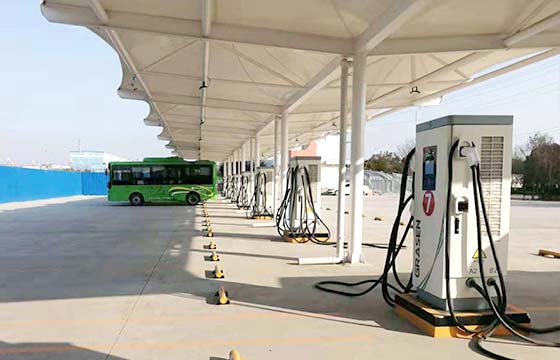Time:
The rise of electric vehicles (EVs) has led to the need for an infrastructure that supports EV charging. As more and more people switch to EVs, businesses must consider installing EV charging stations to attract and retain customers. But how do they justify the investment in EV charging stations? That's where the "EV Charging ROI Guide" comes in.
Using the calculation method below, businesses have the capacity to estimate the ROI associated with constructing an EV charging station and thus make an informed decision.

Electric rate ($/kWh) - Station owners can set the price for charging per kWh. This rate varies depending on factors such as location, time of day, and usage level.
EV charging station power (kW) - The power value of the chargers.
Number of Chargers (sets)
Total power utilization rate of chargers - We can roughly calculate this value by dividing the actual daily charging power of a charging station by the charger power of the entire station.
Efficiency is crucial in the operation of an EV charging station since the costs are mostly fixed once built. Despite this, low utilization can still result in long waiting times during peak periods. To achieve optimal efficiency, it is recommended that the station maintains at least 20% utilization. However, if the utilization exceeds this threshold, the station operator might consider expanding its capacity or building another station in the vicinity.
Annual operating expenses ($) - Mainly include labor costs, EV charging station management system costs, maintenance costs, etc.
Construction investment ($) (after subsidy) - There are several federal, state, and local incentives available that can help businesses reduce the cost of installing EV charging stations.
Daily charging capacity (kWh) = EV charging station power * Number of Chargers * Total power utilization rate of chargers * 24
Annual charging income ($) = Electric rate * Daily charging capacity *360
(Consider that there will be a few days of downtime throughout the year for maintenance and upgrades)
Annual net operating income ($) = Annual charging income ($) - Annual operating expenses ($)
Accumulated profit income ($) = Annual charging income ($) - Construction investment ($) (after subsidy)
After applying the above formula, station owners can estimate how long their investment can be recuperated.
The life expectancy of a charger will also impact the ROI. Grasen DC fast chargers have a 2 years warranty and are designed with 8 years lifespan.
The location is important for the foot traffic of the charging station, hence for the ROI. Is there any competitor close by? Do most of the surrounding clients drive EVs? Factors like these will affect income.
If you are considering building an EV charging station but have no idea where to start, reach out to Grasen for a comprehensive EV charging station solution today!
Submit Request